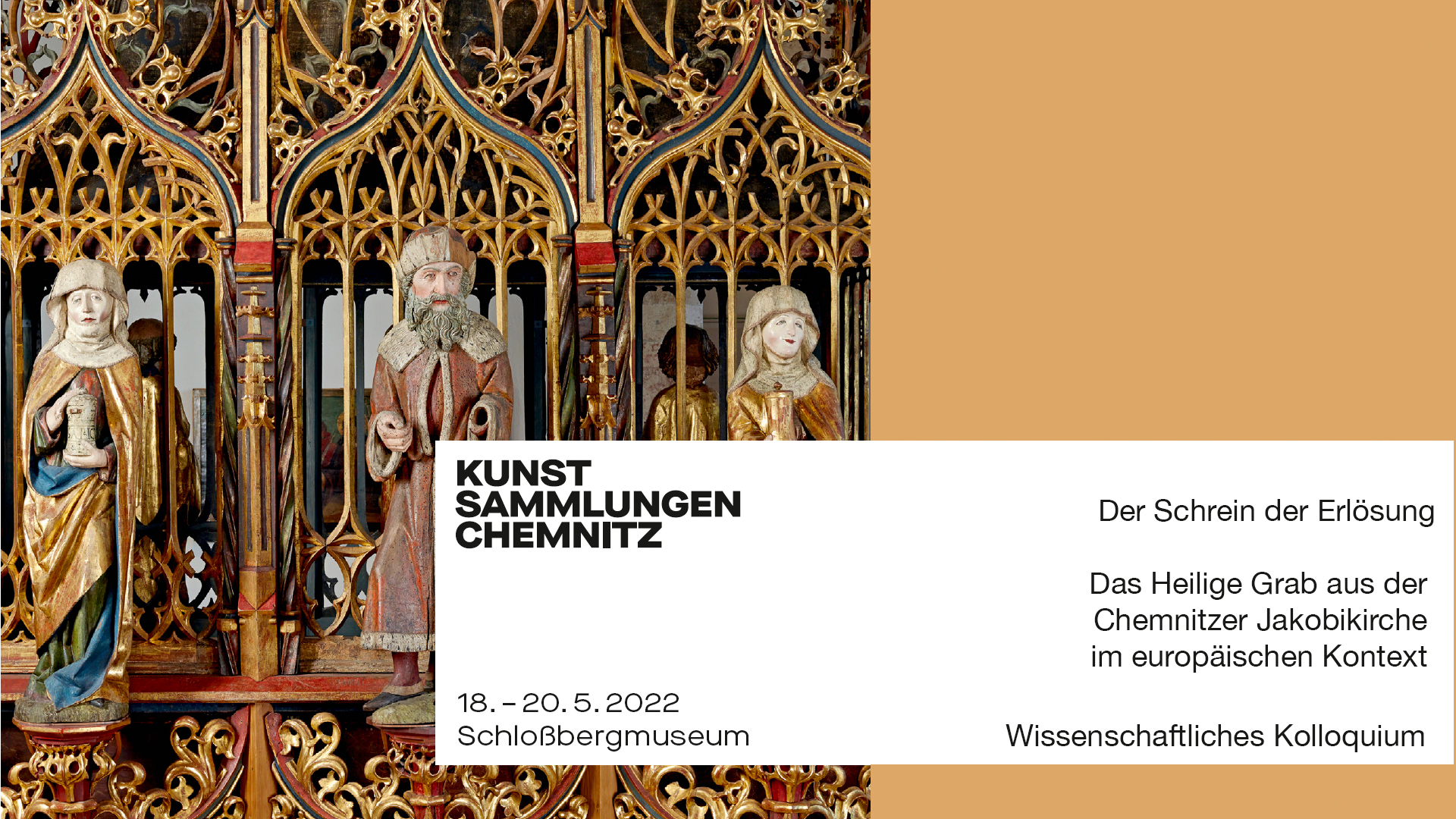
The Holy Sepulchre in the Church of St. Jacob in the city of Chemnitz, created in the late 15th and 16th centuries, served as a “backdrop” for spiritual works as a pictorial illustration of the Passion and Resurrection of Jesus Christ until the introduction of the Reformation. It has since been cleaned and set aside, and has been in the museum’s custody since the 19th century. It is one of the most outstanding objects of Saxon ecclesiastical furnishings, and even more so: as one of the few surviving examples of the magnificent Gothic type of sanctuary, it is of European importance.
Despite its special significance for the history of art and culture, the Holy Sepulchre in Chemnitz has so far remained on the fringes of scholarly debate. One of the reasons may be its storage and inaccessibility for decades, which only came to an end with the restoration completed in 2001 and its return to the Schloßberg Museum.
According to recent research, the objects known so far from Chemnitz, Zwickau, Salzburg and Esztergom have been joined by other representatives from northern and eastern Europe. Renowned specialists will present the results of their research in Chemnitz and invite the public to discuss this exciting chapter in the history of medieval art, culture and piety in Saxony, Germany and Europe.
Download PDF zum Kolloquium (German language only)